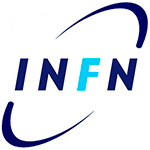Dr. Chiara Capecci
Pulse variational quantum eigensolver algorithm on cross-resonance-based hardware
State-of-the-art noisy digital quantum computers are currently limited to executing short-depth quantum circuits. Variational algorithms, such as the Variational Quantum Eigensolver (VQE), offer a promising solution to unlock the potential of these noisy devices by operating within hardware-imposed depth limits [1,2]. Typically, variational parameters are represented by virtual RZ gate angles, which are implemented through phase changes of calibrated pulses. In the proposed approach, we encode these parameters directly as hardware pulse amplitudes and durations [3]. This method significantly shortens the pulse schedule and overall circuit duration, thereby reducing the impact of qubit decoherence and gate noise [4]. To demonstrate the effectiveness of our Pulse-VQE [5], we calculated the ground state of hydrogen-based systems (H2, H3, and H4) using IBM's cross-resonance hardware. Our approach achieved up to a 5× reduction in schedule duration and lower measured energy compared to CNOT-based Ansätze, with a notable improvement in the minimal energy configuration of H3. REFERENCES [1] Nikolaj Moll et al, Quantum Sci. Technol. 3, 030503 (2018) [2] L. Ratini et al, J. Chem. Theory Comput. 18, 2, 899–909, (2022) [3] T. Alexander et al, Quantum Sci. Technol. 5, 044006, (2020) [4] N. Earnest et al, Phys. Rev. Res. 3, 043088, (2021) [5] D. J. Egger, Phys. Rev. Res. 5, 033159 (2023)





